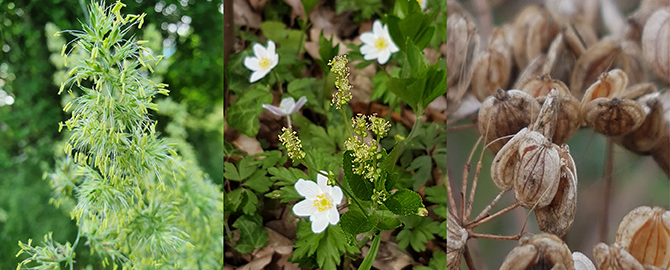- Education
-
Research
Current research
Talent
-
Collaboration
Businesses
Government agencies and institutions
Alumni
-
About AU
Organisation
Job at AU
Aarhus University wants to increase biodiversity in several of the university's green areas. The areas will increase species variation, and can be used in connection with teaching and as a meeting point for social activities.
2021.03.25 |

Gardeners and the heads of building services at AU have looked into which of the university's green areas are best suited for conversion to biodiversity. Based on these considerations, a number of areas have been selected at the University Park, at various locations in Aarhus and Emdrup, and at Påskehøjgaard in Ølsted.
Approximately 5-10% of the university's green areas will be earmarked for biodiversity for the benefit of flora and fauna. This decision was made as part of AU’s overall vision for the sustainable development of campus. The biodiverse areas can also be used in connection with teaching about ecosystems and determining plant and animal species, or as a meeting point for social activities where people can relax or find inspiration. It is important that the areas can coexist with and contribute positively to the overall experience of the university's unique campus areas.
University Director Arnold Boon is pleased with the prospect of increased biodiversity on campus.
“Here at Aarhus University, we’ve experienced an increased interest among our researchers and students for more biodiversity at the university’s outdoor facilities. We take this seriously and, as a large knowledge institution, contributing to increased biodiversity is an obvious choice, both through our research, in our degree programmes and in the operation of the university,” says Arnold Boon. He emphasises that, in addition to establishing new biodiverse areas, university management has also decided that day-to-day management of the university’s green areas will focus even more on incorporating biodiverse solutions.
Gardeners and the heads of building services at AU have looked into which of the university's green areas are best suited for conversion to biodiversity. Based on these considerations, a number of areas have been selected at the University Park, at various locations in Aarhus and Emdrup, and at Påskehøjgaard in Ølsted.
The areas were selected based on the intention to spread the biodiverse areas across different locations. Serious consideration will be given to how to combine aesthetics with biodiversity in order to preserve streams, footpaths and the park's well-known lines of sight.
The university's gardeners and operation managers, together with a group of students and researchers interested in biodiversity, will now deliberate how the new biodiverse areas should be laid out and maintained. One of the researchers is Anders S. Barfod, head of section of Ecoinformatics and Biodiversity at the Department of Biology, Aarhus University. He is the initiator of two existing biodiverse areas in the University Park and he is an advocate for more nature on campus.
"Nature supports man-made society by giving us a range of ecosystem services that we have taken for granted for far too long. We’ve reached a hard limit on what nature can provide, partly due to the disappearance of species. We must and we can do something about this,” he says. He further explains that we need to re-establish the dynamics that characterise natural ecosystems, both for our sake and for the sake of nature.
"The biodiverse areas on campus will have great demonstration value both internally and externally. They can provide university staff and students with small nature experiences in their everyday lives, and demonstrate that AU is at the cutting edge of the biodiversity agenda," says Anders S. Barfod, who is looking forward to seeing more animals and plants on campus.
The input from students, researchers and a landscape architect will be incorporated into a master plan, which will cover the earmarked areas and include a number of principles for biodiversity in the day-to-day operation of all of the university's campuses. Specifically, a catalogue will be prepared with a list of the types and species that can be included in the efforts to increase biodiversity.
Work on the biodiverse areas will also be incorporated into the gardeners' annual schedule, so that biodiversity can be maintained as a natural element without conflicting with major events such as the Regatta, Denmark's Biggest Friday bar or Sports Day in the University Park.